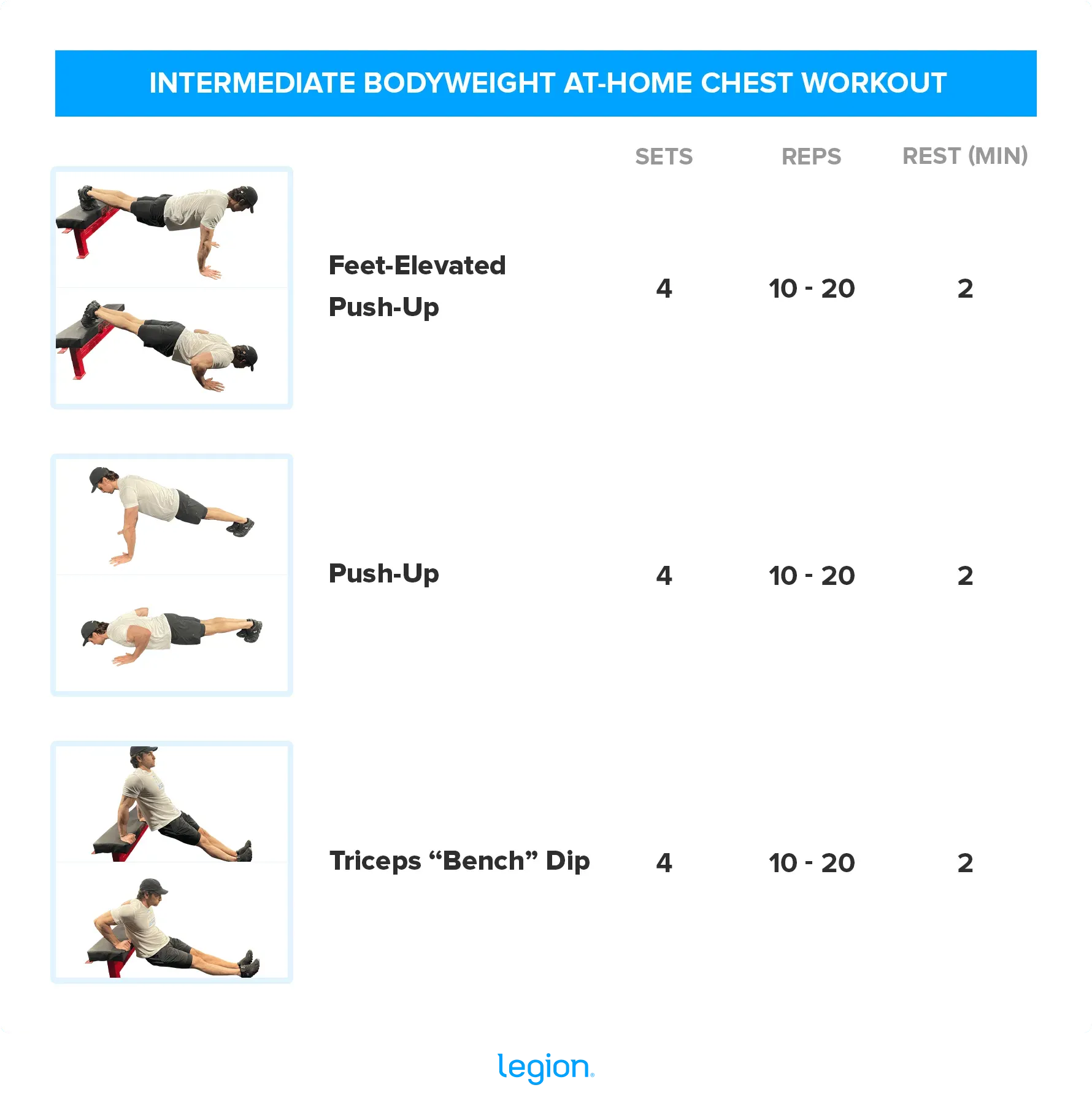Table of Contents
Let's cut to the chase. You want a stronger chest but maybe the gym isn't your scene, or life just gets in the way. Forget the excuses about needing fancy equipment. Building a respectable chest is absolutely possible right where you are, using only your own body weight.
Why Bother with an At Home Bodyweight Chest Workout?
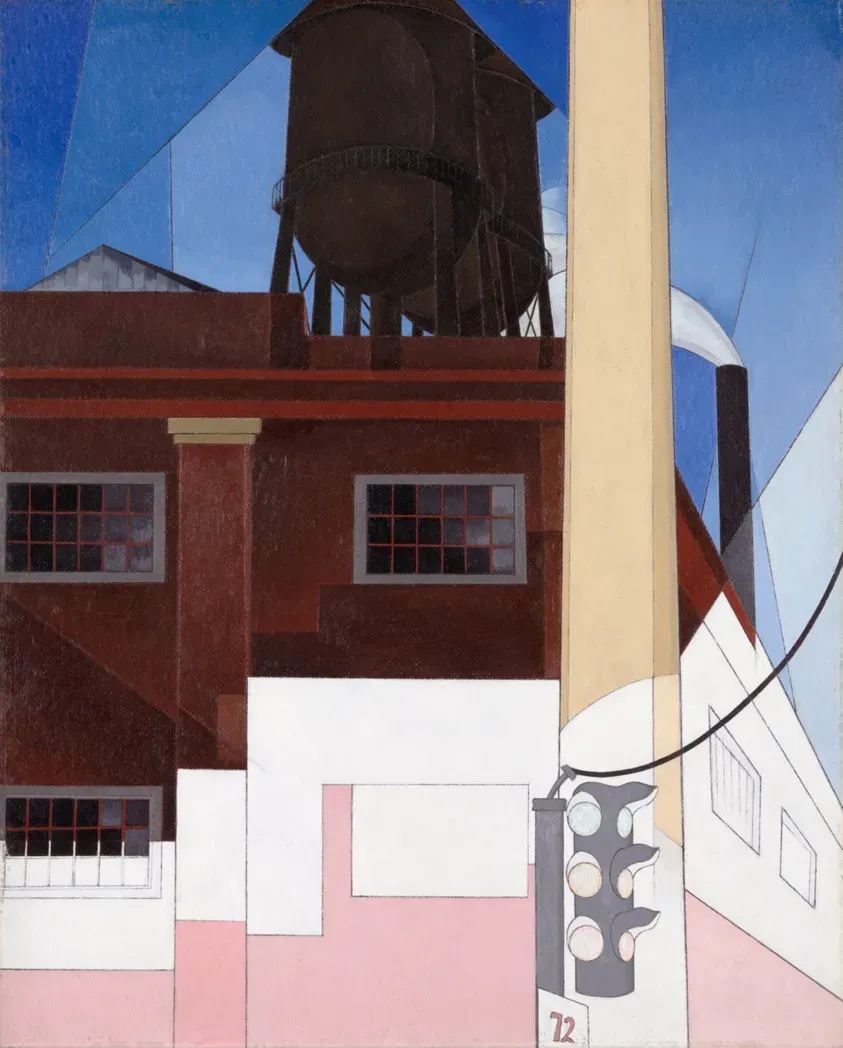
Why Bother with an At Home Bodyweight Chest Workout?
No Gym, No Problem, No Excuses
Let's face it, life gets busy. Gym commutes eat time, monthly fees drain wallets, and sometimes you just can't stand the guy hogging the bench press. This is precisely where an at home bodyweight chest workout steps in. It strips away all those common barriers.
Your living room, basement, or even a patch of floor in your bedroom becomes your training ground. No waiting for equipment, no judging eyes, just you and the floor. It’s the ultimate in convenience, fitting into your schedule whenever you have a spare 20-30 minutes.
You literally carry your gym with you everywhere. Traveling? No sweat. Stuck at home? Perfect. The barrier to entry is essentially zero, provided you have a bit of space to move.
Building Real-World Strength and Stability
While barbells and dumbbells have their place, bodyweight movements often demand more from your stabilizing muscles. Think about a push-up versus a bench press on a machine. The push-up requires your core, shoulders, and even legs to work together to maintain a rigid plank position while your chest does the heavy lifting.
This integrated strength translates better to everyday activities. Lifting groceries, pushing a stubborn door, or even just maintaining good posture – these all benefit from the kind of functional strength you build with bodyweight exercises.
You're not just pushing a weight in a fixed path; you're controlling your entire body through space. That builds resilience and coordination often overlooked in machine-based training.
- Unbeatable Convenience: Train anytime, anywhere.
- Cost-Effective: Zero equipment needed to start.
- Builds Functional Strength: Improves real-world movement.
- Engages Stabilizer Muscles: Better joint health and stability.
- Scalable: Can be made easier or much, much harder.
More Than Just a Starting Point
Some folks dismiss bodyweight training as only for beginners. That's just lazy thinking. While it's an excellent way to build foundational strength and master basic movement patterns, an at home bodyweight chest workout can be incredibly challenging for advanced trainees too.
Progression isn't just about adding weight; it's about increasing leverage, time under tension, or complexity. Ever tried a one-arm push-up? How about weighted push-ups with a backpack? Or decline push-ups with your feet elevated?
The possibilities for making bodyweight chest exercises brutal are nearly endless. So, why bother? Because it's accessible, effective, builds useful strength, and can challenge you no matter your current fitness level. It's a smart, practical way to train your chest.
Essential At Home Bodyweight Chest Workout Exercises
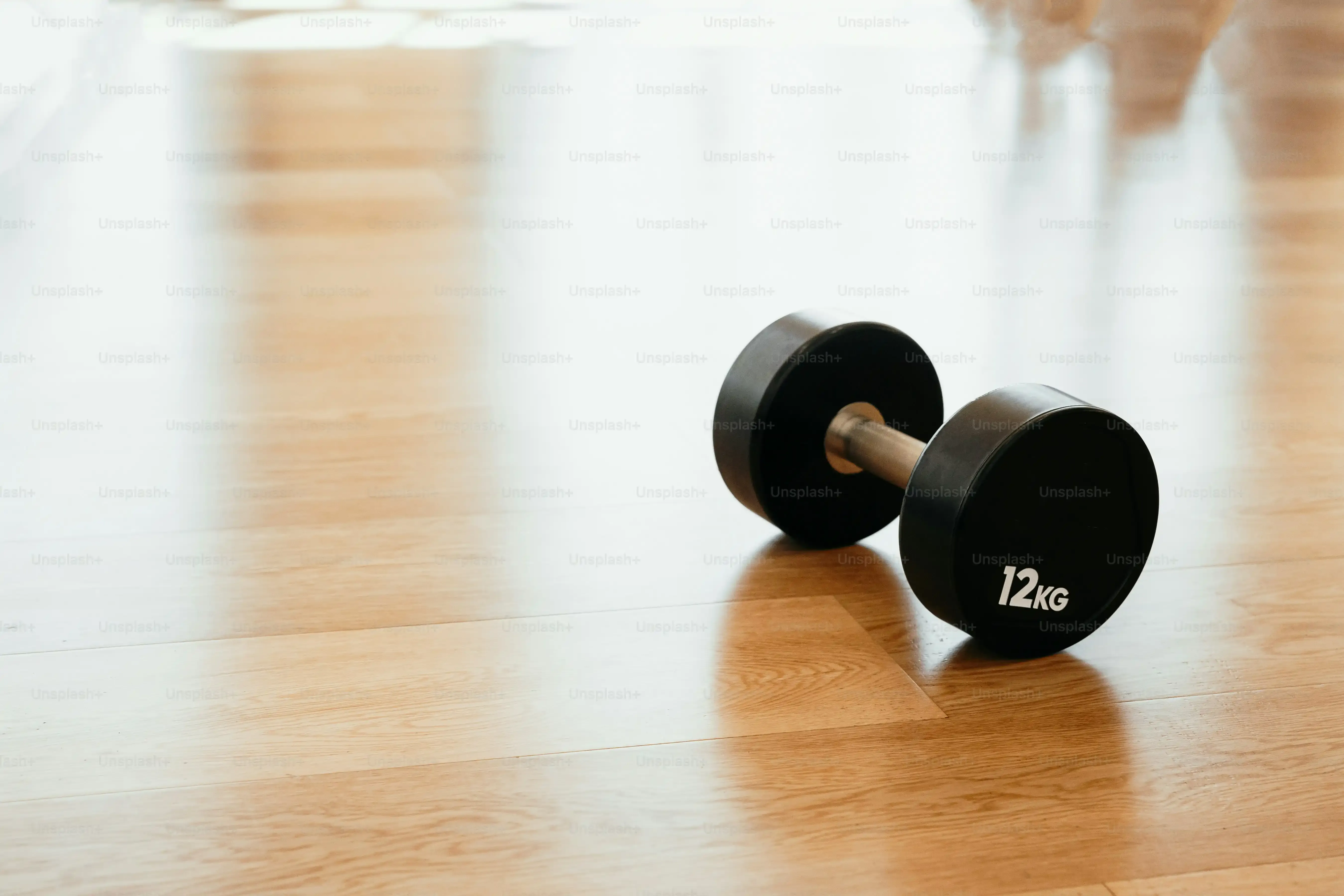
Essential At Home Bodyweight Chest Workout Exercises
Alright, so you're sold on the idea of training your chest without the gym. Great! Now, what are the actual moves you need to be doing for your at home bodyweight chest workout? Forget those weird, ineffective exercises you saw on some sketchy influencer's feed. We're focusing on the tried-and-true classics that deliver results because they fundamentally work the chest muscles. Think of these as your meat and potatoes – the absolute foundation upon which you'll build a solid physique. Mastering these variations is far more important than doing a hundred different fancy moves poorly.
Making Your At Home Bodyweight Chest Workout Harder: Progression Tips
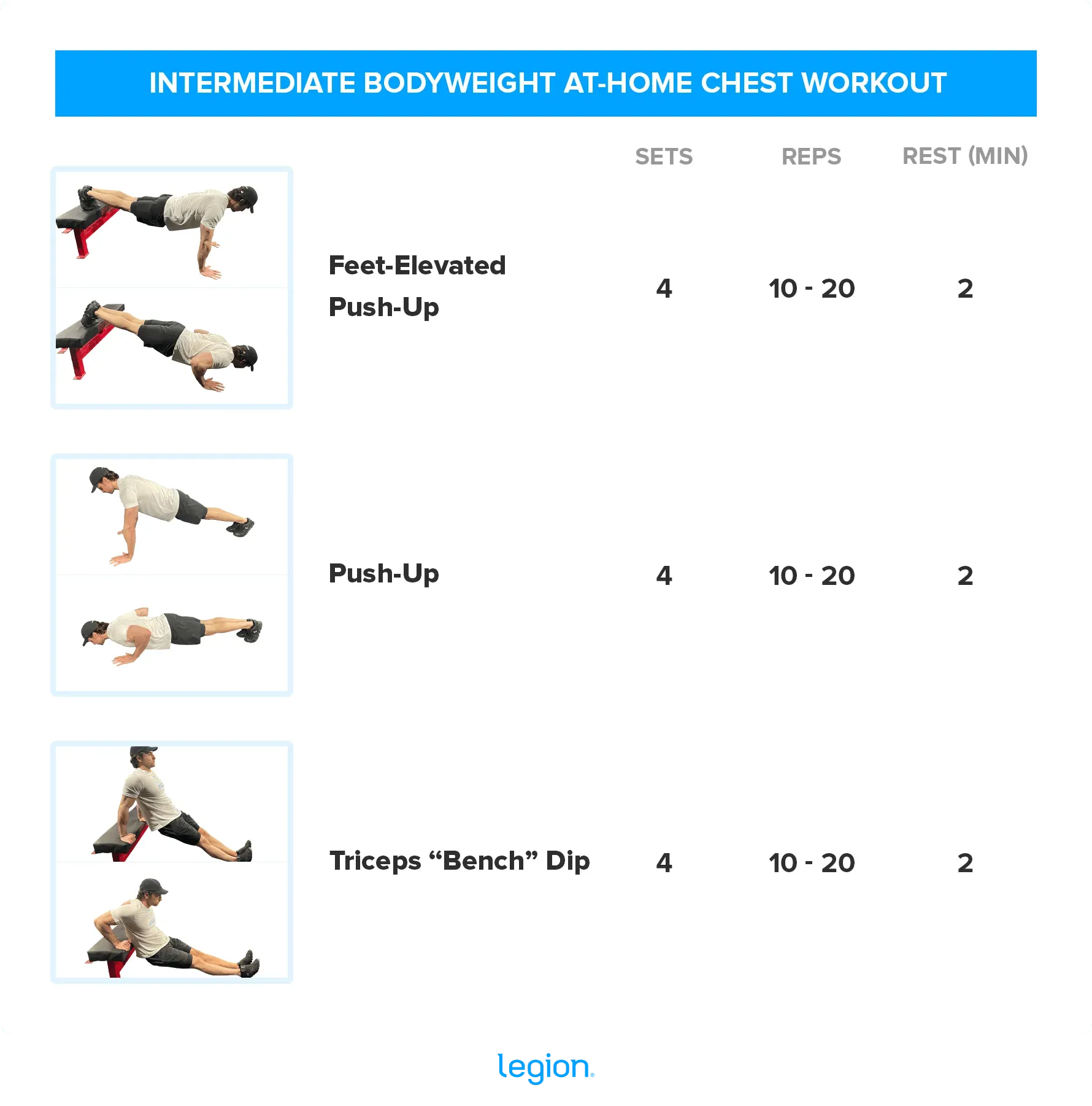
Making Your At Home Bodyweight Chest Workout Harder: Progression Tips
Making Your At Home Bodyweight Chest Workout Harder: Progression Tips
you've mastered the basic push-up. You can crank out sets of twenty without breaking a sweat, and frankly, it's getting a bit boring. This is where the magic of progression kicks in for your at home bodyweight chest workout. Bodyweight training isn't static; it's a dynamic system where you constantly manipulate leverage, time under tension, and movement patterns to keep challenging your muscles. Simply doing more reps isn't always the answer once you hit a certain point; you need to make the reps you *do* perform significantly harder to force continued adaptation. Think of it as turning up the dial on the difficulty setting.
Putting Together Your Weekly At Home Bodyweight Chest Workout Plan

Putting Together Your Weekly At Home Bodyweight Chest Workout Plan
How Often Should You Hit It?
so you've got the killer exercises down and you know how to make them progressively harder. Now, how do you actually schedule this thing into your life? Consistency is king when it comes to any kind of training, and your at home bodyweight chest workout is no different. You can't just randomly decide to do push-ups when the mood strikes and expect serious results. For most people, hitting the chest muscles directly two or three times a week works well. This gives your muscles enough stimulus to grow, but also crucial time to recover between sessions. Remember, muscles don't grow while you're working them; they grow when you're resting and feeding them.
Spacing out your chest days is important. Don't blast your chest on Monday and then try to do it again Tuesday. Your muscles will likely still be sore and performance will suffer, increasing injury risk. Aim for something like Monday and Thursday, or Tuesday, Thursday, and Saturday. This allows for at least one full day of rest in between, letting those muscle fibers repair and come back stronger.
Structuring Your Sessions and Exercise Selection
Once you know how often you'll train, you need to figure out what each session looks like. A good at home bodyweight chest workout session doesn't need to be hours long. Focus on quality over quantity. Start with compound movements that hit the chest hard, like variations of the push-up. Aim for 3-4 exercises per session, maybe 3-4 sets per exercise. The number of reps per set depends on the exercise difficulty – if you can do more than 15-20 reps easily with good form, it's time to pick a harder variation or use one of the progression techniques we talked about.
Mix it up slightly between sessions if you're training three times a week. Maybe one day is focused more on standard push-ups and dips (if you have parallel bars or sturdy chairs), another day on incline and decline variations, and a third day on more advanced progressions like pseudo planche push-ups or archer push-ups. This ensures you're hitting the chest fibers from slightly different angles and keeps things from getting monotonous. Don't forget to warm up properly before diving into the heavy sets!
- Train chest 2-3 times per week.
- Allow at least one full rest day between sessions.
- Aim for 3-4 exercises and 3-4 sets per session.
- Select exercise variations based on your current strength level.
- Vary exercise selection slightly across the week if training 3 times.
- Always warm up before starting.
Avoiding Common Mistakes in Bodyweight Chest Training
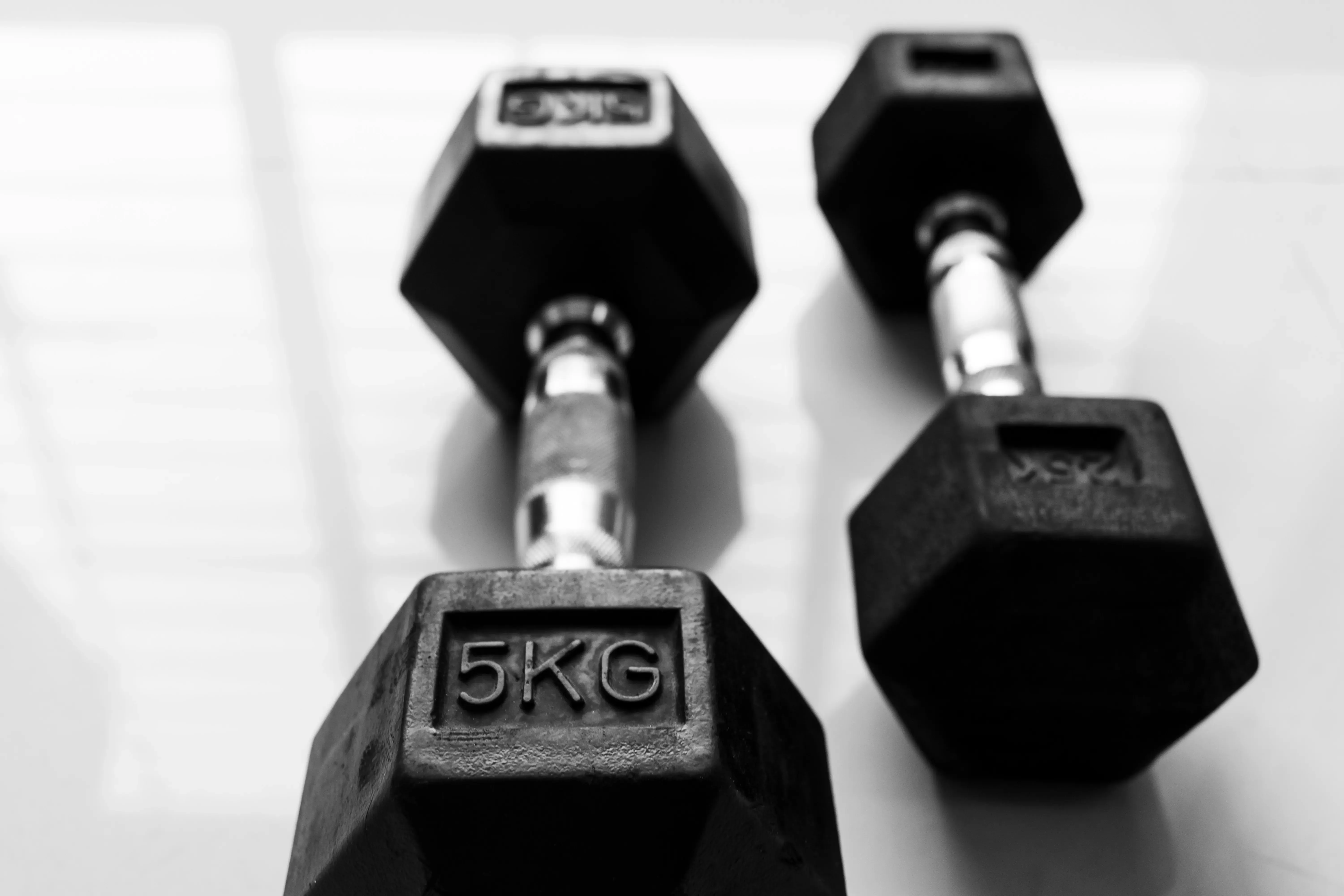
Avoiding Common Mistakes in Bodyweight Chest Training
Sacrificing Form for Reps
Look, I get it. You see someone online blasting out 50 push-ups in thirty seconds and you think, "I should be doing that many!" Then you drop to the floor, elbows flaring out like a chicken's wings, back sagging, and barely lowering yourself a few inches. This is mistake number one in your at home bodyweight chest workout journey, and it's a big one. Poor form doesn't just make the exercise less effective for your chest; it screams injury risk for your shoulders and wrists. You're essentially practicing a bad movement pattern, reinforcing weakness instead of building strength.
Focus on quality over quantity. A perfect push-up involves keeping your body in a straight line from head to heels, tucking your elbows slightly towards your sides (think 45 degrees, not 90), lowering your chest all the way to the floor (or as close as your current strength allows with good form), and then pushing back up with control. If you can only do five like this, that's your starting point. Five good reps are infinitely better than fifty bad ones.
Ignoring Progression (Or Only Doing More Reps)
Another classic trap is getting stuck doing the same basic push-up variation month after month. You mastered ten reps, then fifteen, then twenty. Now you can do thirty, but your chest isn't getting any bigger or stronger. This is a plateau, and it happens when you stop challenging the muscle sufficiently. Simply adding more reps becomes a test of endurance, not strength or hypertrophy (muscle growth). Your muscles need a reason to adapt, and doing the same easy thing indefinitely isn't a compelling reason.
An effective at home bodyweight chest workout demands smart progression. As we discussed, this means changing the leverage (like elevating your feet), increasing the time under tension (slowing down the eccentric or lowering phase), reducing the base of support (like doing one-arm push-ups or pseudo planche variations), or adding external resistance (a backpack full of books works wonders). Don't just chase arbitrary rep numbers; chase harder variations and more challenging execution.
Mistake | Why It Hurts Progress | How to Fix It |
|---|---|---|
Bad Form | Ineffective muscle targeting, high injury risk. | Prioritize control and proper alignment over reps. Watch tutorials. |
No Progression | Leads to plateaus, stops muscle growth. | Use harder exercise variations, increase time under tension, add weight. |
Inconsistency | Muscles don't get enough stimulus to adapt. | Schedule workouts, stick to the plan, make it a habit. |
Only Doing One Exercise
Some people think "chest workout" means "push-ups." While push-ups are fundamental, relying solely on one movement leaves gaps in your training. Your chest muscles have different fibers that are emphasized more or less depending on the angle of the push. A standard push-up hits the mid-chest well, but you also need to target the upper and lower chest effectively for balanced development. Neglecting these areas leads to a less impressive physique and potential muscle imbalances down the line.
A complete at home bodyweight chest workout should include variations that hit different angles. Incline push-ups (hands elevated) target the lower chest. Decline push-ups (feet elevated) hit the upper chest. Archer push-ups or pseudo planche push-ups increase the demand on specific parts of the chest and shoulders. Incorporating dips (if you have the setup) is also fantastic for hitting the lower chest and triceps. Don't be a one-trick pony; build a repertoire of movements to create a well-rounded stimulus.
Cool Down and Recovery for Your Chest Muscles
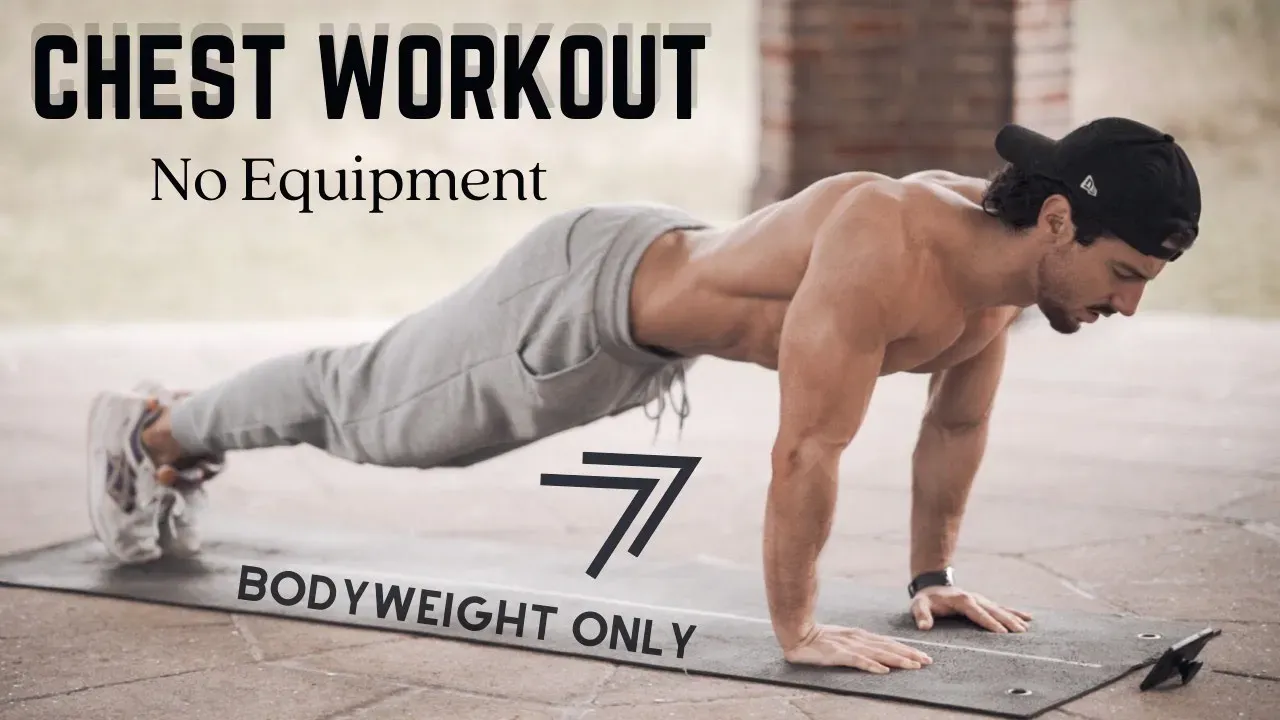
Cool Down and Recovery for Your Chest Muscles
Why Bother Cooling Down?
you just finished crushing your at home bodyweight chest workout. Your chest feels pumped, maybe a little shaky. You might be tempted to just collapse onto the couch. Resist that urge. Skipping the cool-down is like slamming on the brakes after speeding down the highway – jarring and not great for the system. A proper cool-down helps bring your heart rate back down gradually, signals to your body that the intense work is over, and can potentially help with immediate muscle soreness and flexibility. It's not a miracle cure for delayed onset muscle soreness (DOMS), but it's a small investment in feeling better sooner and maintaining mobility.
Think of it as the closing ceremony for your workout. You wouldn't skip the cool-down phase of your car's engine after a hard drive, would you? Your body deserves the same respect. It's five to ten minutes that can make a difference in how you feel in the hours and days following your training session. Plus, it's a good habit to build.
Essential Post-Workout Stretches
Now for the practical part. What does a chest cool-down actually look like? Primarily, it involves gentle stretching. You want to lengthen the muscles you just worked hard. Find a doorway or a wall. Place your forearm or hand on the doorframe or wall, with your elbow bent at about a 90-degree angle. Lean forward gently until you feel a stretch across your chest and shoulder. Hold this for 20-30 seconds. Repeat on the other side. You can adjust the height of your arm to hit different parts of the chest.
Another good one is the hands-behind-back chest stretch. Interlock your fingers behind your back, straighten your arms, and gently lift your hands upwards while keeping your chest open. This opens up the front of the shoulders and chest. Again, hold for 20-30 seconds. Avoid bouncing or forcing the stretch; it should be a comfortable tension, not pain. This is about restoring some length to the muscle fibers, not turning yourself into a pretzel.
- Doorway Stretch (Arm at 90 degrees)
- Doorway Stretch (Arm higher or lower)
- Hands-Behind-Back Stretch
- Child's Pose (Can stretch lats and chest indirectly)
- Pec Minor Stretch (Found by reaching hand behind back, grabbing something low, and leaning away)
Beyond the Cool-Down: Prioritizing Recovery
Cooling down is just one piece of the recovery puzzle after your at home bodyweight chest workout. True recovery happens outside of your training session. The two biggest players here are sleep and nutrition. You can train as hard as you want, but if you're chronically sleep-deprived and eating junk, your muscles aren't going to repair and grow effectively. Aim for 7-9 hours of quality sleep per night. This is when your body does most of its repair work, including muscle protein synthesis.
On the nutrition front, make sure you're getting enough protein. Protein provides the building blocks your muscles need to rebuild stronger after being broken down during your workout. Lean meats, fish, eggs, dairy, legumes, and protein supplements are all good sources. Don't forget carbohydrates and healthy fats either; they provide the energy needed for recovery and overall bodily function. Staying hydrated throughout the day is also crucial. Recovery isn't glamorous, but it's where the magic actually happens.
Your Chest Built, At Home
So there you have it. Building a stronger, more defined chest doesn't require a gym membership or piles of weights. Your at home bodyweight chest workout, executed with focus, proper form, and consistent effort, provides the resistance you need. It's about mastering the basics, intelligently increasing the challenge, and sticking to a plan. Stop waiting for the 'perfect' time or place. The equipment you need is already with you. Now, go use it.
